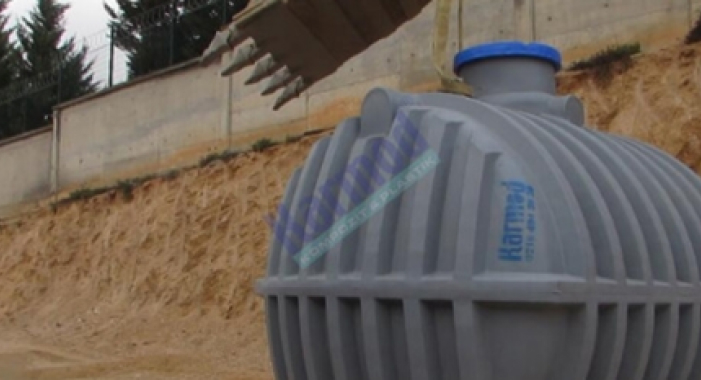
Storage products can vary in scale from providing drinking water in homes to large-scale use in industrial facilities, municipal water systems, and water treatment plants. Among these storage products, stainless steel water tanks are known for their durability and longevity. Additionally, storage products are made from materials like polyethylene, fiberglass, or stainless steel, which are resilient and water-resistant, making them suitable for long-term use.
These storage products can be installed above or below ground. Underground storage is preferred to reduce its height compared to above-ground storage, which is chosen for easier access. Moreover, underground storage better protects water and prevents significant temperature fluctuations. Proper preparation of the installation area ensures the tank's longevity and safe use. Here are six tips for preparing the area where the tank will be installed:
1) Leveling the Ground
The ground where the tank will be placed should be leveled. This ensures that the water level inside the tank is distributed evenly and prevents undue stress on the tank walls. Ground leveling materials are substances applied to create a smooth and even surface. Various materials are used to facilitate ground preparation and the application of coating materials. Ground leveling materials reduce surface roughness, aiding in the proper application of coating materials. Additionally, they can enhance the ground's durability and resistance, extending its lifespan. Ground leveling materials can also contribute to added features like water and heat insulation, as well as fire resistance.
2) Soil Compaction
After leveling the ground, soil compaction is necessary. This process strengthens the ground and prevents soil movement beneath the tank. Soil compaction materials are chemical substances that assist in compacting soil for use in construction and landscaping applications. These materials are used to make the soil denser and more durable. Soil compaction materials are typically made from materials like cement, lime, clay, and bentonite. They can increase soil's water-holding capacity and enhance its resilience. Soil compaction materials can also serve in erosion control, slope stability, and as fill material. In civil engineering, they are widely used in constructing roadways, airport runways, dams, ports, and building foundations. Additionally, in landscaping applications, they are used to compact the soil in parks and gardens.
3) Cleanliness
Maintaining the cleanliness of the tank's surroundings is crucial for preserving the quality of stored water. Pollution around the tank can allow contaminants to enter, affecting the stored water's quality. Therefore, maintaining cleanliness around the tank is as important as cleaning the tank itself. Properly prepared surroundings make cleaning easier. An even, well-maintained ground simplifies the cleaning process. Irregular or uneven ground can create difficulties during cleaning. Materials used in the tank's surroundings should be easy to clean. For instance, concrete or hard surface coverings are easier to clean than vegetation or other objects that may be present. Therefore, the area around the tank should minimize the presence of vegetation and other objects.
4) Adequate Accessibility
Adequate accessibility around the tank is essential for cleaning and maintenance. During the cleaning process, easy access to the tank's surroundings is crucial. Cleaning materials and equipment should be readily available around the tank. Ensuring accessibility helps maintain a hygienic environment. To prepare the tank's surroundings properly, sufficient access should be provided. During the cleaning process, the tank's surroundings should be easily accessible, and cleaning materials and equipment should be stored conveniently.
5) Environmental Planning
The area where the tank will be installed should be organized and cleaned. This involves arranging and shaping natural and artificial elements in an area, reshaping and conserving it. This process can be carried out before constructing a new structure or to organize adjacent lands for an existing structure. Environmental planning is important for aesthetic appeal, preserving natural resources, and creating a safe environment.
6) Tank Installation
Once the ground preparation is complete, it's important to follow the tank installation instructions carefully. This ensures that the tank walls are assembled correctly and the tank roof is securely placed. In the case of polyester water tank models, on-site assembly is possible, but this requires proper preparation of the tank site. This includes cleaning and leveling the tank base and, if necessary, pouring concrete for a solid foundation. The tank site should be prepared to match the tank's size and capacity.
Properly preparing the area where the tank will be installed is crucial for ensuring its longevity and the quality of the stored water. By following these six tips, you can create an environment that promotes the safe and effective use of your water storage tank.


 EN
EN
 DE
DE
 FR
FR
 IT
IT
 ES
ES
 PT
PT
 RU
RU
 AR
AR
 BG
BG
 SR
SR
 GR
GR
 SQ
SQ
 RO
RO
 PL
PL
 HU
HU
 CZ
CZ
 HR
HR
 AZ
AZ
 GE
GE
 AM
AM
 IL
IL